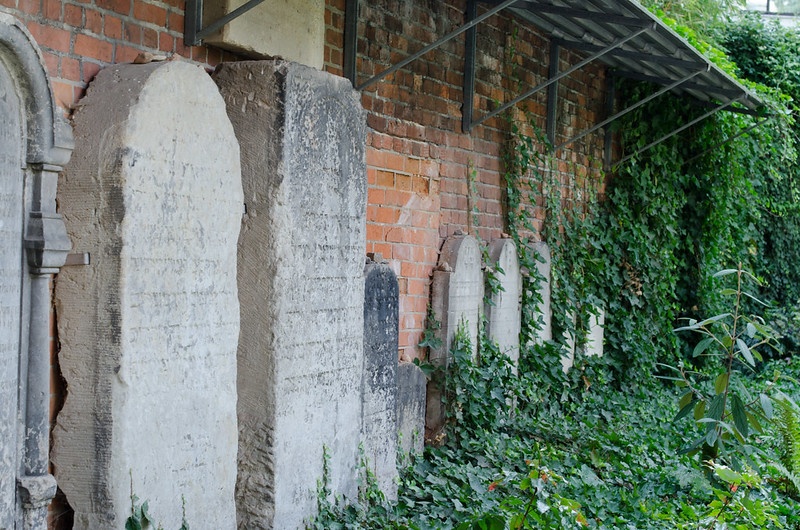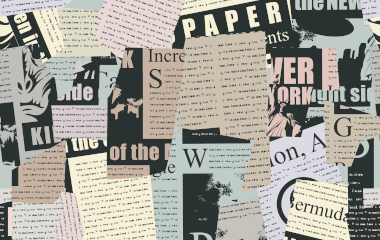
Often when we think of Frankfurt we think of Rabbi Shimshon Raphael Hirsch. And for good reason. He almost single handedly is responsible for creating a community of observant Jews. But just as Zevulun comes before Yissachar because his financial support allowed his brother to learn, none of what he accomplished would have been possible if not for the foresight and support of the Rothschild family who in 1851 invited Hirsch to lead the nascent separatist Orthodox community of Frankfurt, a community that numbered just 11 shomer Shabbat families. By the time he died in 1888, Frankfurt had become a major centre of Torah life.
Frankfurt had once been amongst the great centers of learning. Perhaps its most famous child is Rav Moses Sofer better known as The Chatam Sofer. Though he left Frankfurt soon after his bar-mitzva he signed all of his responsa with the epitaph Moshe hakatan Sofer from Frankfurt am Main. While he is buried in Pressburg (today known as Bratislava) where he gained worldwide fame, his mother is buried in the old cemetery in Frankfurt and in something quite unusual for a woman her grave has become a place of prayer for many.
Outside the ancient cemetery is a site that was perhaps the most moving of the entire trip. Covering the walls surrounding the cemetery are little blocks listing the name, date of birth, where they were deported to, and the date of death if known, of the 13,000 Jews from Frankfurt murdered by the Nazis. As Stalin yms noted a single death is a tragedy a million deaths is a statistic. We must always remember that six million individual Jews were murdered. Reading name after name after name makes the horrors of the Holocaust a bit more "real" and is just so sad and tragic.
Another of the Rabbinic greats of Frankfurt (and Berlin) is Rav Yaakov Yehoshua Falk, the author of the Pnei Yehoshua, one of the most important works of Talmudic commentary. He was forced to flee Frankfurt as he took the "wrong" side in the Emden-Eybeshitz controversy, supporting the assertions of Rav Yaakov Emden that Rav Yonatan Eybeshitz was a secret Sabbatian. This did not sit well with the powers that be and he lost his job and ended up spending the last years of his life wandering from place to place.
Yet as mentioned in our earlier postings during the first decades of the 19th century Torah observance in Germany waned and waned and waned. It was R. Hirsch who "returned Torah to its glory." He understood that the "old methods" would no longer work and reinvigorated Judaism beautifully, walking the fine line between tradition and innovation.
It is almost shocking for people to hear that in the school he founded boys did not wear kippot for their general studies. And while classes were separated by gender, the school was coed. Yet at the same time seeing all wisdom as part of Torah he insisted that "general studies" had to be taught by observant Jews. Talmud was almost non-existent in the school with the focus for both boys and girls being Tanach, Midrash, philosophy and ethics. Vacations were to the Swiss Alps. When questioned about this he responded that after 120 years when the Creator asks him if he appreciated the world He created he wants to be able to answer yes. This brilliant orator wore clerical robes on Shabbat, and introduced a synagogue choir, battling the Reform on their own turf.
One innovation he did not try in Frankfurt was the abolishing of Kol Nidrei something he did while a young rabbi in Oldenburg, feeling that such recital bordered on a chilul Hashem with its implication that Jews do not take vows seriously. As one can imagine this change did not go over too well and was quickly rescinded. Youthful exuberance gives way to the strength of established custom.
Shuckling was not permitted in the shul such being viewed as undignified. No one save the rabbi was allowed to daven with their tallit over their heads and even the rabbi could do so only for the Amidah. Other practices that would make modern Orthodox Jews "upset" include no dancing on Simchat Torah, selichot on erev Yom Kippur as long, perhaps longer, than erev Rosh Hashannah and not reciting Yizkor. It is our custom to recite such, that is most difficult to understand, its mood conflicting with the joyous simcha of Yom Tov.
His tombstone is evidence of how he was perceived by the community and in fact by Jewish History. "Our great Rabbi, Prince of the Torah, the Crown of Our Head, Israel's Crown of Glory, He illuminated the Eye of those in the Diaspora, a hero full of strength. Our master and rabbi, Rabbi Shimshon, the son of our teacher and rabbi, Rabbi Rafael Hirsch[1], Frankfurt."
However what makes his tombstone most unique is one missing word, something I have never seen before. At the bottom of Jewish tombstones around the world it is beyond customary to have the letters tnzbh standing for tehe nishmato tzrurah btzror hachaim, may the soul be bound up in the bond of eternal life. On R. Hirsch's grave the words are spelled out which is unusual in itself. But what makes this truly remarkable is that the word tehe is missing turning the wording from a prayer into a statement. There is no need to davenfor R. Hirsch that he should be rewarded, rather it is a given.
Buried a few rows away are Rabbi Marcus Horowitz who served as the communal Orthodox rabbi during the time of R. Hirsch and his successor Rabbi Nechamia Nobel a brilliant orator who passed away at the young age of 50.
Yet until World War II these few rows were separated by a wall dividing the communal cemetery from the cemetery of the separatist community founded by R. Hirsch. When Hirsch insisted on separation from the Reform or even the Orthodox who did not separate from Reform, he meant it - for all eternity. The wall lasted until a bomb landed on it during the war.
That was not the only errant bomb. While the communal Orthodox shul, the Borenplatz shul was destroyed on Kristallnacht the separatist shul synagogue was destroyed by errant American bombs during the war.
Today not only is there no separate community in Frankfurt, the Reform and Orthodox daven in the same building with the Orthodox using the main shul and the Reform a smaller room in the shul building. Quite a change from days gone by.
What I found jolting was the fact that the shul davens nusach Sefarad! Talk about a break with tradition.
One area where the communal Orthodox, the separatist Orthodox and the Reform saw eye to eye was in its opposition to Zionism. While the reasons for such may have differed their opposition did not. As is well known, the first Zionist conference was convened by Theodore Herzl in Basel, Switzerland in 1897. What is less known is that the conference was originally planned for Munich. However the across the board opposition to Zionism in Germany caused a change in venue. Only Rabbi Nehemiah Nobel, the successor to Rabbi Horowitz, identified with Zionism and even he wavered at time. This German Zionist and Orthodox rabbi was also the composer of a tefillah for the German soldiers during World War 1. His successor Rabbi Jacob Hoffman was much more open about his Zionism. He moved to New York in 1938 becoming Rabbi of Ohev Tzedek on the Upper West Side of Manhattan.
Spending nine days in Germany is a most powerful, moving and a tremendously meaningful experience. To think that one of the most cultured, sophisticated, and educated societies could do what it did is frightening. To see the changes that have taken place in recent years gives one hope.
Travelling to Germany strengthens the pride in our people and gives us inspiration from what those who came before us accomplished. There is sadness beyond words for what was lost, yet hope and confidence for the future. That Torah is studied and observed today in Germany, that one can walk freely in the streets with a kippa demonstrates in one more way the determination of our people. Most importantly it taught the eternity of the Jewish people and the crucial message that no matter how far we may want to separate from other Jews the world understands better than we that we are one people. The sooner we learn that lesson the better off we will all be.
[1] Rav Hirsch's actual name and presumably the way he was called to the Torah was Rav Shimshon ben (the son of) Rav Raphael Hirsch. Only later did he become known as Rabbi Shimshon Raphael Hirsch.

